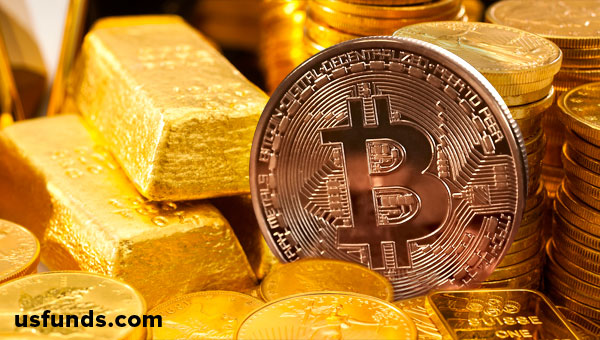The Long, Victorious Campaign
For the twenty-five years following the 1978 passage of the Humphrey Hawkins Act, the division of labor between Congress (and the Executive Branch) and the Federal Reserve worked well, providing political cover for Chairman Volcker to turn the monetary screws tightly to reverse double digit inflation, and for Chairman Greenspan to continue Mr. Volcker’s fight against too-high inflation until that war was won decisively. And won it was, with the Federal Open Market Committee (FOMC) embracing de facto official victory on May 6, 2003, declaring (my emphasis, not the FOMC’s):
“Although the timing and extent of that (economic) improvement remain uncertain, the Committee perceives that over the next few quarters the upside and downside risks to the attainment of sustainable growth are roughly equal. In contrast, over the same period, the probability of an unwelcome substantial fall in inflation, though minor, exceeds that of a pickup in inflation from its already low level. The Committee believes that, taken together, the balance of risks to achieving its goals is weighted toward weakness over the foreseeable future.”5
To counter that probability of unwelcome disinflation, the FOMC took the Fed funds rate to 1% – not at, but very close, to the zero lower nominal bound – and in August of that year, broke with conventional monetary tactics and pre-committed to holding that 1% rate for a “considerable period.”6
That considerable period lasted until June 2004, at which point the FOMC, armed with evidence that self-sustaining, job-creating economic recovery was underway, in the context of inflation reversing marginally to the upside, embarked on what it pledged to be a “measured pace” of hiking its policy rate.7 And indeed it was measured, the beginning of a series of 25 basis-point hikes in the Fed funds rate at 17 consecutive FOMC meetings, ending at 5 ¼% for the Fed funds rate in June 2006.
A key reason – I would argue the key reason – that the FOMC was successful in aborting the risk of unwelcome disinflation in 2003–2004, while fostering a robust economic and job recovery in following years, was that the U.S. economy was not in a liquidity trap. Quite to the contrary, household sector demand for credit, notably credit collateralized by housing, was very elastic to friendly interest rates and even more elastic to the markets’ systemic degradation of underwriting standards for such credit. Nothing like low rates combined with the expansion of the availability of credit to those hitherto denied to foster a credit-fueled housing sector boom! It was the Forward Minsky Journey.8
And it was followed by the Minsky Moment and the Reverse Minsky Journey.9
The grand, multi-decade campaign against too-high inflation had been won, but in a major way, it was a pyrrhic victory.10 Price stability (mandate-consistent inflation) that promotes bubbles in asset prices and debt creation is a prescription for a debt-deflation bust and a subsequent liquidity trap, as Minsky had so presciently warned.
Living in a Liquidity Trap
And that’s where we are right now, as bluntly explained by (among others) Chicago Fed President Charles Evans just a few weeks ago:
“So we have all the ingredients for a liquidity trap: Businesses are cautious about new investment and households are too worried to meaningfully increase consumption. And interest rates can’t fall in the way needed to increase investment and consumption because short-term rates are already at zero: They’ve fallen as far as they can go. If this state of affairs continues, it could very well stifle any reasonably robust recovery. Unemployment would remain unacceptably high, and disinflationary pressures would be reinforced – clearly an undesirable outcome.
These rare occasions of liquidity traps are very different from typical economic recessions. Consequently, they require a unique monetary policy response. Economic theory tells us that in such circumstances monetary policy should aim to lower the real, or inflation-adjusted, rate of interest by temporarily allowing inflation to rise above its long-run path.
My preferred way of doing so is to implement an approach called price-level targeting. Simply stated, under this approach, the central bank strives to hit a particular price-level path within a reasonable period of time. For example, if the rate of change of the price-path is 2 percent and inflation has been under-running the path for some time, monetary policy would strive to 'catch-up' so that inflation would be higher than the inflation target for a time until the path was regained.
This higher inflation rate would decrease the real interest rate, raising the opportunity cost of holding money. This would provide an incentive for banks and corporations to release funds for investment, and in the process spur job creation.
In my opinion, such a strategy is entirely appropriate. The Fed has a mandate from Congress to encourage conditions that foster both price stability and maximum employment. Recently the Fed has missed on both dimensions of this dual mandate, with inflation running below the 2 percent level I associate with price stability, and with unemployment staying well above any reasonable estimate of the natural rate.
Practically speaking, price-level targeting in the current environment would call for a series of large-scale asset purchases to recover the shortfall in inflation. At the same time, we would continue to carry a large balance sheet in order to maintain low interest rates for an extended period. Most important, we would clearly communicate the path for prices that we expect to attain, in order to enhance the public’s understanding of the Fed’s intentions.”11
Last week, the FOMC did not, of course, embrace President Evan’s advocacy of price-level targeting. Nonetheless, QE2 was launched, with planned purchases of some $75 billion per month of longer-term Treasuries through the middle of next year, subject to review along the way and presumably, continuation and expansion beyond, if needed.
It was a courageous decision, no doubt also contentious, which we will learn more about in two weeks time, when the minutes of last week’s FOMC meeting are released. It was a decision made in the context of a benefits-costs calculus, as foretold by Chairman Bernanke at Jackson Hole in late August.12 By a 10–1 majority, the FOMC decided that the likely benefits outweighed the likely costs.
Within that majority, I have no doubt that there was a range of views as to the non-precise ratio between those likely benefits and costs. Indeed, I have serious gut pains when thinking about it, because I fervently believe, as Chairman Bernanke voiced back in 2002–2003, that quantitative easing coupled with pro-active fiscal expansion, alongside price level targeting, is the hat-trick with the most likely probability of success in breaking an economy out of a liquidity trap. But, while far from the best outcome given the paralysis of the fiscal agency, that does not mean that one-hat QE2 will be ineffectual.
Chairman Bernanke made this case well the day after the FOMC’s decision, writing that:
“The FOMC intends to buy an additional $600 billion of longer-term Treasury securities by mid-2011 and will continue to reinvest repayments of principal on its holdings of securities, as it has been doing since August.
This approach eased financial conditions in the past and, so far, looks to be effective again. Stock prices rose and long-term interest rates fell when investors began to anticipate the most recent action. Easier financial conditions will promote economic growth.
For example, lower mortgage rates will make housing more affordable and allow more homeowners to refinance. Lower corporate bond rates will encourage investment. And higher stock prices will boost consumer wealth and help increase confidence, which can also spur spending. Increased spending will lead to higher incomes and profits that, in a virtuous circle, will further support economic expansion.”13
Bottom Line
Ever since, as noted at the outset, Chairman Bernanke has come under attack, particularly from international quarters, as one of the transmission mechanisms from QE2 (indeed, the anticipation of it) to “easier financial conditions” is a weaker foreign exchange value for the dollar. But this is not “strange,” Mr. Bernanke said over the weekend:











